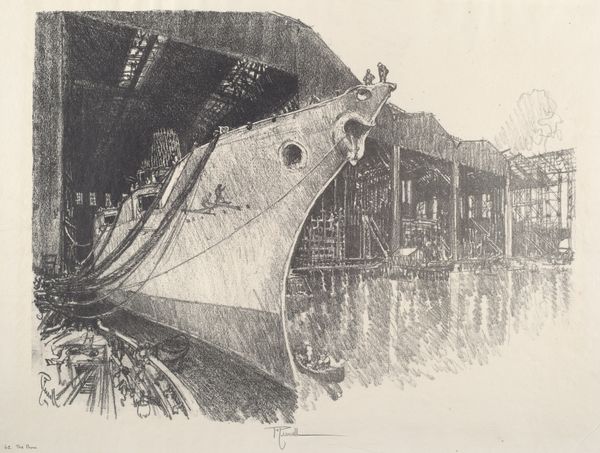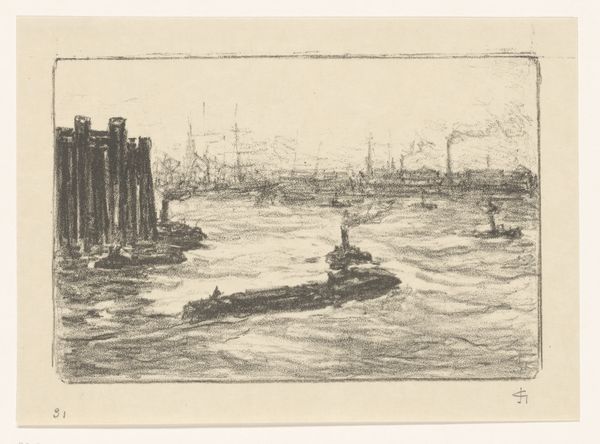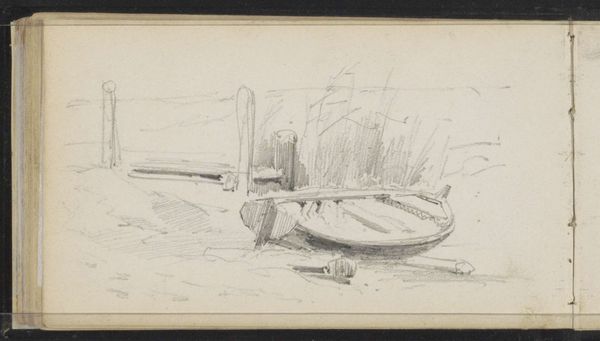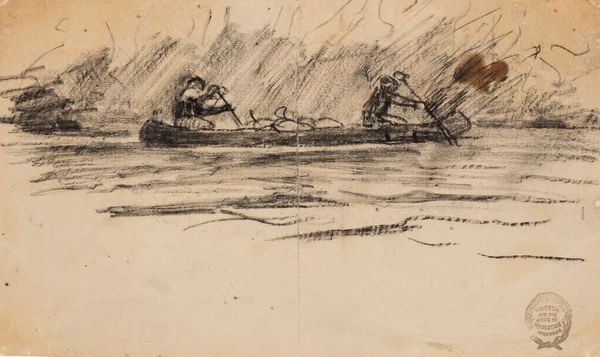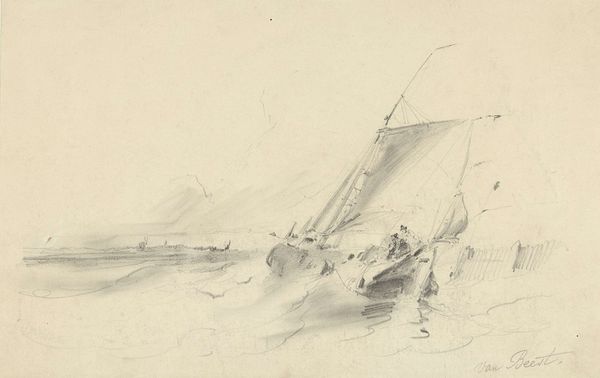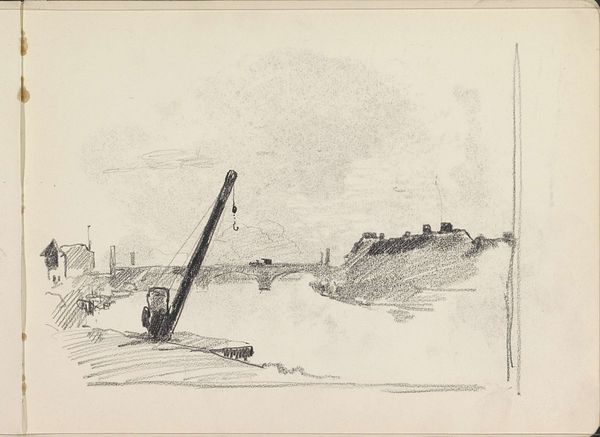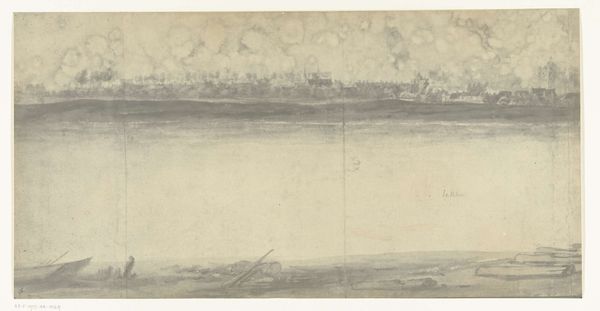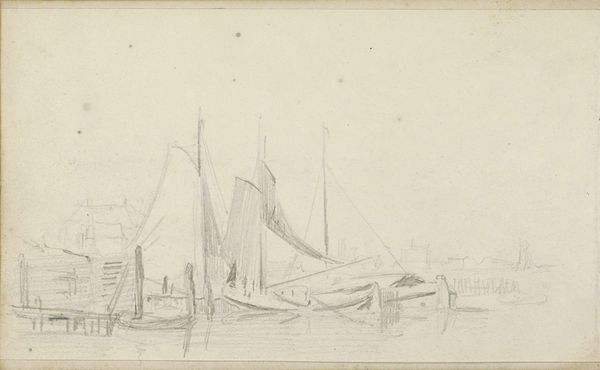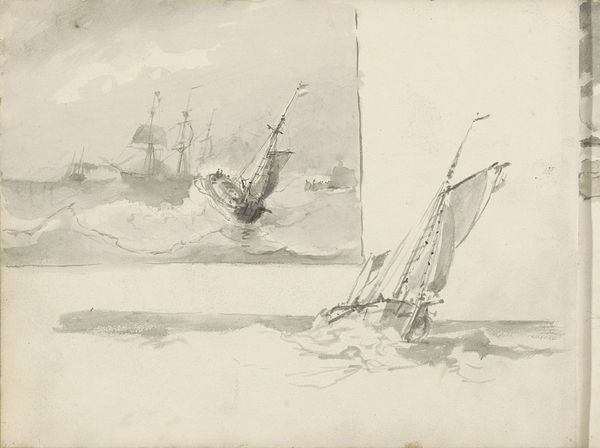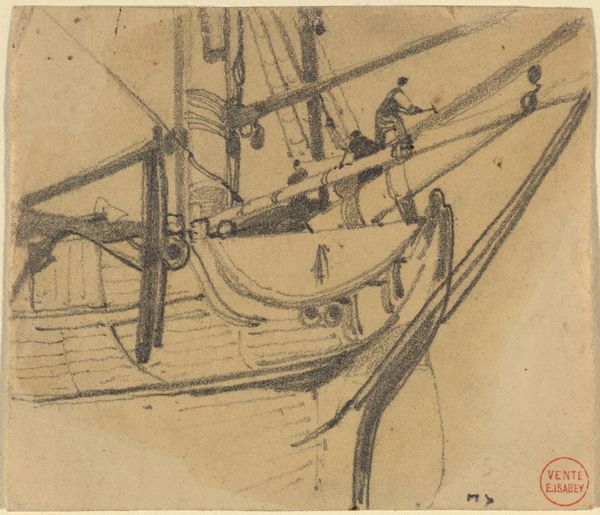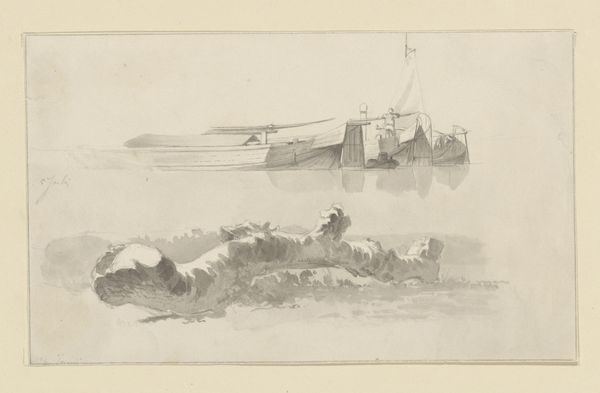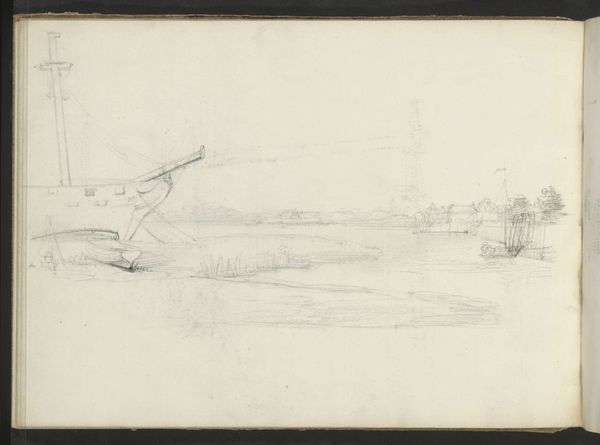
drawing, pencil
#
drawing
#
pencil sketch
#
landscape
#
romanticism
#
pencil
#
realism
Dimensions: height 121 mm, width 175 mm
Copyright: Rijks Museum: Open Domain
Curator: John Linnell’s "Quay Wall near a Shed," executed in pencil in 1806, offers a glimpse into the working waterfront. Editor: It's almost melancholic. There's a quiet stillness, a subdued mood despite depicting what was likely a bustling industrial area. The soft grays, the hazy atmosphere... Curator: Yes, I see that melancholy, which reflects broader artistic trends in representations of the rapidly industrializing world, particularly regarding class and labor at this time. I would emphasize the social realities embedded in depicting labor. How does this image function in discourse around marginalized workers, in 19th century Britain? Editor: I'm intrigued by the pencil work. The layering of lines gives a real sense of texture to the stone wall and shed. It's almost like feeling the roughness of the materials just by looking at it. What can we say about how this artist chose to portray this particular dockyard at this specific moment in time? Curator: I think Linnell, by focusing on this marginal space of industry, implicitly engages with questions of labor and economic shifts within early 19th century England, reflecting a growing concern for the impact of industrialization on society. And I suggest that the gender of the worker, if we are to assume their being male, is worthy of additional contextualization, relative to expectations and power structures during the time. Editor: Thinking about the location itself...the quayside. It's a point of exchange, isn't it? Not just of goods, but of labor and capital, a place where raw materials are transformed. But Linnell renders it with such sensitivity, elevating this quotidian site to something contemplative. The labor might not be visible at first glance, but can be uncovered and elevated with closer attention. Curator: I completely agree. Engaging with this drawing on its own terms provides invaluable insights into societal shifts around the production and exchange during the industrial era and challenges the marginalization of working-class voices in canonical art historical narratives. Editor: It really highlights how focusing on materiality can unlock new perspectives, linking the aesthetic qualities to their broader social and historical context. Curator: Indeed.
Comments
No comments
Be the first to comment and join the conversation on the ultimate creative platform.

